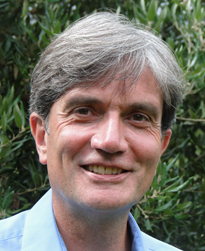Vision for Reading 2050 moves on
Release Date 07 December 2015

A variety of representatives from businesses, charities, public sector and academia attended an interactive workshop this week to discuss Reading's future, and further develop an ambitious vision for Reading.
The initiative, called Reading UK 2050, began in 2013, when a group of professionals were brought together by Barton Willmore. This project then led to the development of a more detailed Smart and Sustainable Reading 2050 Vision in partnership with University of Reading and Reading UK CIC. The workshop is the latest in a series of activities which is designed to create a framework for people to better understand how Reading could look in 2050.
The focused and interactive day, which was shaped to help develop three interconnected scenarios for Reading: Green Technology, Parks and Rivers and Festivals and Culture, included short inspirational presentations and a design session, encouraging participants to focus on what Reading has excelled at, and what could be improved. Professor Tim Dixon (School of the Built Environment) and Professor Lorraine Farrelly (Foundation Professor of Architecture) led delegates, who included representatives from Reading Borough Council, in backcasting and visioning work. Professor Kathy Pain (Real Estate and Planning), Dr Maria Noguer (Walker Institute) and Professor Roberta Gilchrist (Archaeology) also contributed to discussions during the day.
Professor Tim Dixon said: "The Reading 2050 project is a great example of a University working with local partners to co-produce a city vision. The ambition is to develop a vision for Reading which will enable everyone to better understand how Reading could transition to a smart and sustainable low carbon future by 2050, drawing on Reading's strengths as a centre for digital innovation, green thinking and heritage and culture."
Kim Cohen, Partner at Barton Willmore said: "In recent years transport infrastructure has improved to provide fantastic connectivity and a strong proposition for inward investment. Our heritage, vibrant town centre, entrepreneurial culture and diverse community provides a great foundation upon which to build a much stronger identity for Reading, enhancing liveability and economic success."
Drawing upon the morning's workshops the 44 strong group looked ahead to 2050, bringing ideas to life with a variety of creative mediums including maps and plasticine.
Nigel Horton-Baker, Executive Director of Reading UK CIC, said: "It was exciting to see today's challenges for Reading transformed into scenarios and 3D spatial proposals for a better future for Reading by 2050. We are looking forward to drawing upon the vast amount of creativity, innovation, passion and energy in the room, creating a draft sustainable future vision for Reading and then testing it with Reading's businesses and residents. Harnessing the enthusiasm of everyone committed to the future of Reading will help us make it a better place to live and work for all."
The first draft of the vision will be released in March, but from now until then, the Reading 2050 partners are calling for more local businesses and individuals to get involved.
To get involved, find out more please visit the new Reading 2050 website: www.reading2050.co.uk. Follow on Twitter using #Reading2050.
